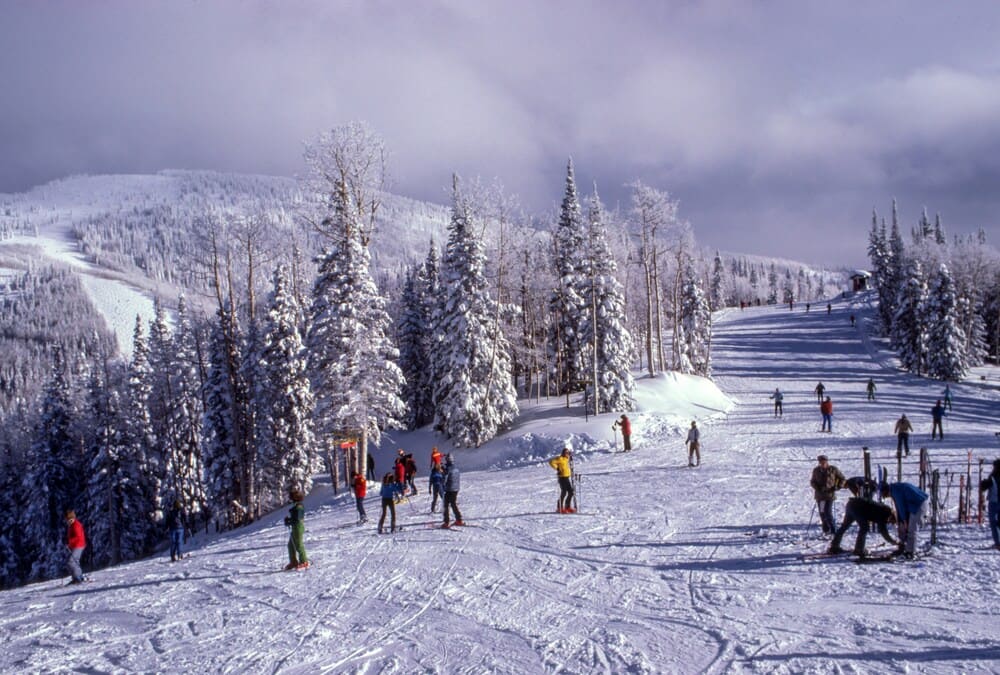Skiing is an exhilarating winter sport that brings the thrill of speeding down snow-covered mountains and the serenity of nature. However, this popular activity has a significant environmental impact. From energy-intensive resorts to the use of non-biodegradable gear, skiing can harm the natural world. As the conversation around sustainability grows, skiers have an opportunity to make more environmentally conscious choices. By adopting sustainable practices, skiers help preserve the natural spaces they love and ensure future generations can enjoy them.
Choosing Eco-Friendly Ski Gear
One of the most impactful ways to reduce your environmental footprint as a skier is by being mindful of the gear you choose. Ski gear, including skis, boots, jackets, and accessories, often contains materials that are not easily biodegradable, contributing to pollution when discarded. Selecting eco-friendly alternatives can significantly lessen your carbon footprint.
Many companies now offer ski gear made from recycled or sustainable materials. For example, some skis use sustainably sourced wood or recycled metal, reducing the demand for new raw materials. Eco-friendly ski jackets and pants often feature recycled polyester or organic cotton, which are less harmful to the environment than conventional materials.
Durability is another crucial aspect to consider. High-quality gear may cost more upfront, but it lasts longer, reducing how often you need to replace it. By investing in durable items, you minimize waste and lower the overall environmental impact of your skiing activities.
Moreover, purchasing second-hand equipment or renting gear can also reduce your impact. The second-hand market for ski gear is robust, and buying used items recycles perfectly usable equipment. Renting is another option that saves money and reduces the demand for new products. Both practices support a circular economy and help minimize waste.
Supporting Sustainable Ski Resorts
The ski resorts you visit play a significant role in your environmental footprint. Traditional ski resorts can be energy-intensive, relying heavily on electricity for lifts, snowmaking machines, and other operations. However, many resorts are adopting sustainable practices to reduce their environmental impact.
When planning a ski trip, research resorts that prioritize sustainability. Look for those that use renewable energy sources like wind, solar, or hydroelectric power. Some resorts implement energy-efficient snowmaking processes that use less water and energy, and they may also have programs to protect local wildlife and forests.
Additionally, some resorts work to reduce waste by promoting recycling and composting or by offering reusable or biodegradable utensils in their dining facilities. Others provide free shuttles or encourage public transportation to lower vehicle emissions. Supporting these resorts helps drive the movement toward more sustainable tourism.
For example, several ski resorts in the Alps have pledged to become carbon neutral by implementing these and other environmentally friendly measures. By choosing such destinations, you encourage more resorts to adopt similar practices.
Transportation: Getting to the Slopes Sustainably
Transportation is one of the largest contributors to the carbon footprint of a ski trip. Whether flying to an international destination or driving to a local mountain, the emissions from travel are significant. However, several strategies can help reduce this impact.
Whenever possible, choose public transportation like trains or buses to reach your destination. Many ski areas offer shuttle services that reduce the need for individual car trips, cutting down on emissions. Carpooling with friends or other skiers is another effective way to reduce the number of vehicles on the road.
If you must drive, consider using a fuel-efficient or electric vehicle. Electric vehicles (EVs) have become more viable for longer trips, especially with the expansion of charging infrastructure. Many ski resorts now offer charging stations for EVs, making them a practical choice for environmentally conscious skiers.
For those traveling by air, choose direct flights when possible. Direct flights minimize the number of takeoffs and landings, which are the most carbon-intensive phases of flight. Consider purchasing carbon offsets through reputable programs to balance out your travel emissions. While offsets are not a perfect solution, they fund projects that reduce carbon emissions elsewhere, such as reforestation or renewable energy initiatives.
Reducing Waste on the Slopes
Reducing waste is another important aspect of sustainable skiing. Skiing often involves disposable products, from plastic water bottles to single-use snack wrappers. These items can accumulate, increasing waste that may not be properly disposed of, especially in mountainous regions where waste management is challenging.
To minimize waste, bring reusable items like water bottles, food containers, and utensils. A thermos filled with a hot beverage can replace multiple single-use cups. Packing snacks in reusable containers helps avoid disposable packaging. Many ski resorts have water refill stations, making it easy to keep your reusable bottle filled throughout the day.
Additionally, dispose of any waste generated during your ski day responsibly. Many resorts provide recycling bins, but it is important to sort your waste correctly to ensure proper processing. If you cannot find appropriate disposal options, consider packing out your waste and recycling it when you return home.
Another way to reduce waste is by supporting resorts and local businesses that prioritize sustainable practices. For example, some ski areas have eliminated plastic bags and straws or use compostable materials for food service. By spending your money at these establishments, you encourage others to adopt similar waste-reduction practices.
Responsible Behavior in Nature
Skiing involves close contact with nature, and responsible behavior is crucial to minimizing your environmental impact. Following the Leave No Trace principles is essential for protecting the environment and preserving natural habitats.
One key principle is to stay on designated trails. Straying off marked paths can damage fragile ecosystems, especially in alpine regions where plants and wildlife are particularly vulnerable. Staying on trails also helps prevent soil erosion, which degrades the quality of the slopes and surrounding areas.
Respecting wildlife is another crucial aspect of responsible skiing. Winter is a challenging time for many animals, and disturbances from human activity can have severe consequences. If you encounter wildlife on the slopes, give them plenty of space and avoid making loud noises that could startle them.
Finally, be mindful of how your actions impact other skiers and the environment. Avoid littering, and if you see trash left by others, consider picking it up and disposing of it properly. By taking these small but meaningful actions, you help preserve the natural beauty of the mountains for everyone to enjoy.
Conclusion
Skiing offers a unique opportunity to connect with nature, but it comes with responsibilities. By choosing eco-friendly gear, supporting sustainable resorts, traveling responsibly, reducing waste, and respecting the natural world, skiers can minimize their environmental impact. These practices help preserve the mountains and forests that make skiing so special for future generations. The joy of skiing increases when you know your actions contribute to the planet’s health and sustainability. Through thoughtful choices and responsible behavior, every skier can protect the winter landscapes they love.




